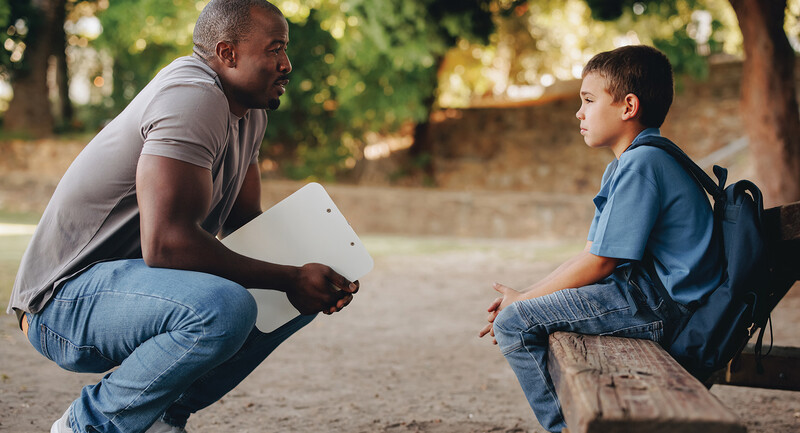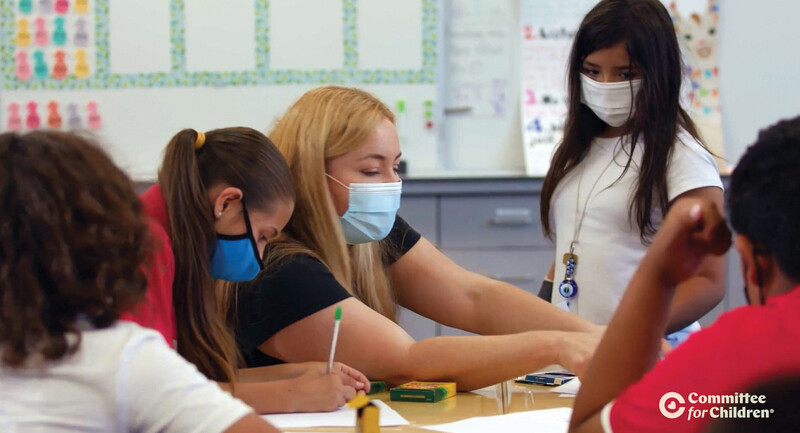"Go back to your side of the street …. Go back to Africa!"
These words were said to me weekly by an adult in my neighborhood as I walked to elementary school. My "side" of the street? I wondered. And how could I go back to a place I had never been?
To me, my side of the street was just the side I lived on. I could deduce what he meant by the Africa comment, but I did not understand the hatred I was experiencing just because of a thing we call melanin.
The events in Charlottesville this past summer brought those words back to mind. I've tried to forget them and that ugly time—not the 1960s, but 1992 in Toledo, Ohio. Now, my heart is hurting again as I turn on the news and witness hatred playing out for the world to see—and the reasons behind the justified protests of that hatred (in the NFL, for example) being lost to misunderstanding. It hurts as an educator, a mother, and a veteran who served in the U.S. Army to protect this great nation. It's easy to allow anger to set in, but what will that accomplish? How, I wonder, can we reconcile this hatred with our most precious resource—our children? How can we teach them to be better than generations of the past?
Nelson Mandela said, "No one is born hating another person because of the color of his skin, or his background, or his religion. People must learn to hate, and if they can learn to hate, they can be taught to love."
I have been thinking about this quote a lot lately, especially the notion that we can teach acceptance, teach tolerance, and teach others how to love. I hope my fellow educators will join me this school year in bringing Mandela's quote to fruition. In my experience, these three steps can help:
1. Trace It
As a country, we must trace back to the root of intolerance. If we do not get a good understanding of where we started, we will never be able to get to where we need to go. As educators, we must plan lessons that allow us to trace back to some of the ugliest times in our history and acknowledge that they occurred. We must make sure that our students are represented in the curriculum that we are presenting to them. I can recall asking my students about the word atrocity and using it to describe the Holocaust. I was shocked to learn that many of my 8th graders had never heard of the Holocaust. We quickly launched into a study that traced just how this atrocity happened by reading Elie Wiesel's Night as well as visiting a Holocaust museum, where we met a survivor.
2. Face It
We must be willing to have uncomfortable conversations that seek to raise awareness and bridge divides. Listening to all sides is the key to achieving understanding. Nothing hurts worse than hearing "just move on" because how can we move on from something that we refuse to face? A great resource to explore as we confront our biases is the Social Justice Book List compiled by the National Network of State Teachers of the Year. This list, which is recommended by teachers for teachers, provides a vast amount of preK–12 resources (and books for adults) to initiate the necessary discussions that will move us to action.
3. Replace It
After we have traced our deep-rooted issues and faced those issues head-on by studying and talking about them, we must then replace the negativity with positivity. Determining as a class or school to raise cultural awareness can help address the stereotypes we may harbor. In one community project, our class learned about law enforcement so that we could break down the view of "us" and "them." We then blogged about our experience for others to see. I also had students study and present on the backgrounds of their peers rather than themselves. This was a powerful way to develop a greater appreciation for one another and to learn to honor the uniqueness that each person brings to the classroom. It's crucial to facilitate activities such as these because, often, we fear what we do not know. In time, we can begin to replace fear with understanding.
Educators have a responsibility to help change the narrative in society. We are better than this and can be better than this by committing to this work together. We do need to "go back," but not to another country, as my childhood tormentor would have liked. We need to go back to the past to trace it, face it, and replace it—teaching our students that we are all one in the human race.
Would you like to write for the next "Road Tested" column? Click here for submission details.








